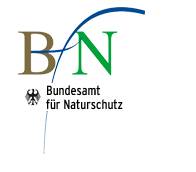Analysis of successful collective actions brought by recognized environmental and nature conservation associations on the basis of species protection legislation in the period 2007 - 2017
The existing rights of action for recognized environmental and nature conservation associations in Germany have been extended several times, particularly for the implementation of requirements under international and EU law. Species protection law plays a central role in the cases brought before the courts. Particularly in licensing law, there are very frequent violations of substantive law in Germany, which are made public by recognized associations. However, it is largely unclear how many violations of species protection regulations have occurred in the area of collective actions since 2009, what impact these violations have had in court proceedings and which aspects of species protection were the focus of the cases.
Particularly in view of the investment backlog in the area of infrastructure in Germany, the enforcement of environmental and nature conservation regulations has come under increasing pressure. The current legislative process to accelerate planning also sees nature conservation as an opportunity to reach planning maturity more quickly, in addition to other potential efficiencies. In the public debate, it is not uncommon for the field hamster or the red kite to be seen as the greatest possible obstacle to investment. It is repeatedly argued that class actions lead to a flood of lawsuits and overburden the courts. They would also result in the realization of infrastructure projects being unduly delayed.
It is therefore important in the public debate to compile empirically reliable data on complaints under species protection law, to place them in context and, moreover, to point out the need to comply with nature conservation regulations.
This research project analyzes the class actions filed by recognized environmental and nature conservation associations in the period from 2007 to 2017, which relate to the application of the prohibitions and exemptions of the special species protection law in Section 44 para. 1 and § 45 para. 7 of the Federal Nature Conservation Act (BNatSchG). First and foremost, the number of successful legal actions brought by associations due to violations of environmental and nature conservation law is determined in order to compare this figure with the total number of (successful) legal actions brought by associations. The empirical part of the study follows on from the studies on the development of legal action by environmental and nature conservation associations, which UfU carried out together with Prof. Dr. Alexander Schmidt for the periods of 2007 to 2010, 2011 to 2012 and from 2013 to 2016 has created.
Runtime
08/2018 – 07/2019
Cooperation partner
Prof. Dr. Alexander Schmidt, Anhalt University of Applied Sciences
Supported by
Federal Agency for Nature Conservation
Contact us
Dr. Michael Zschiesche, Eva Lütkemeyer



